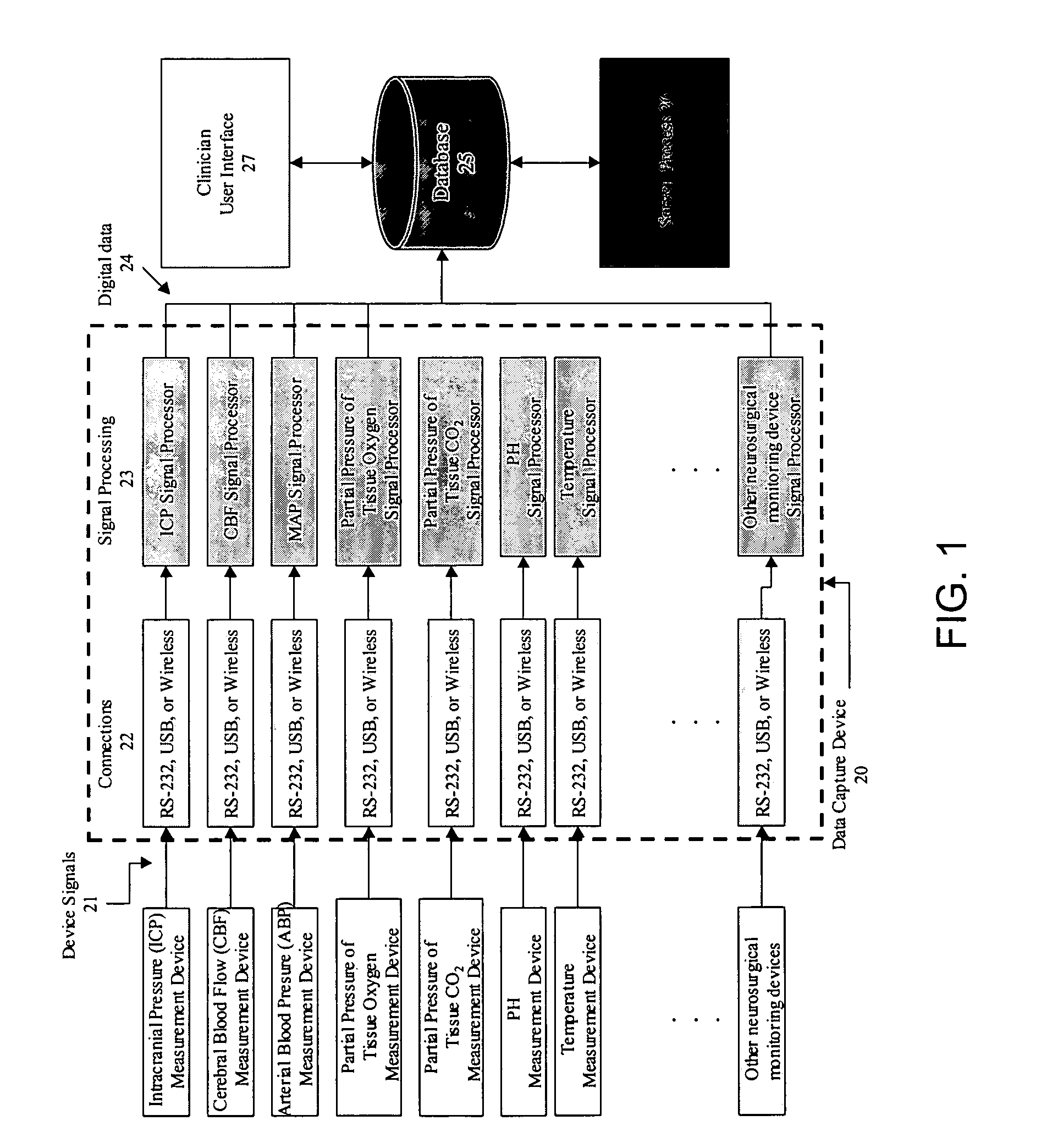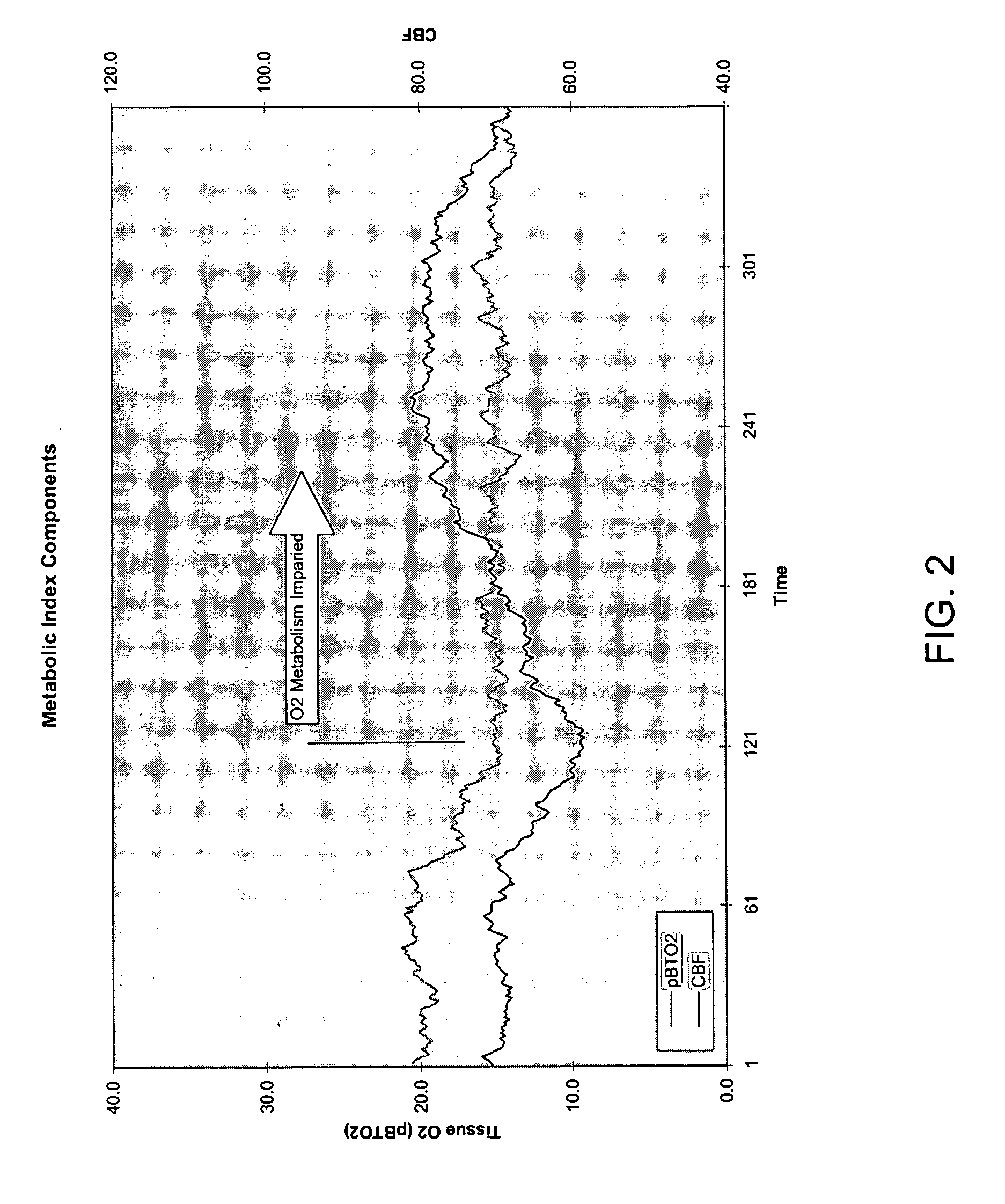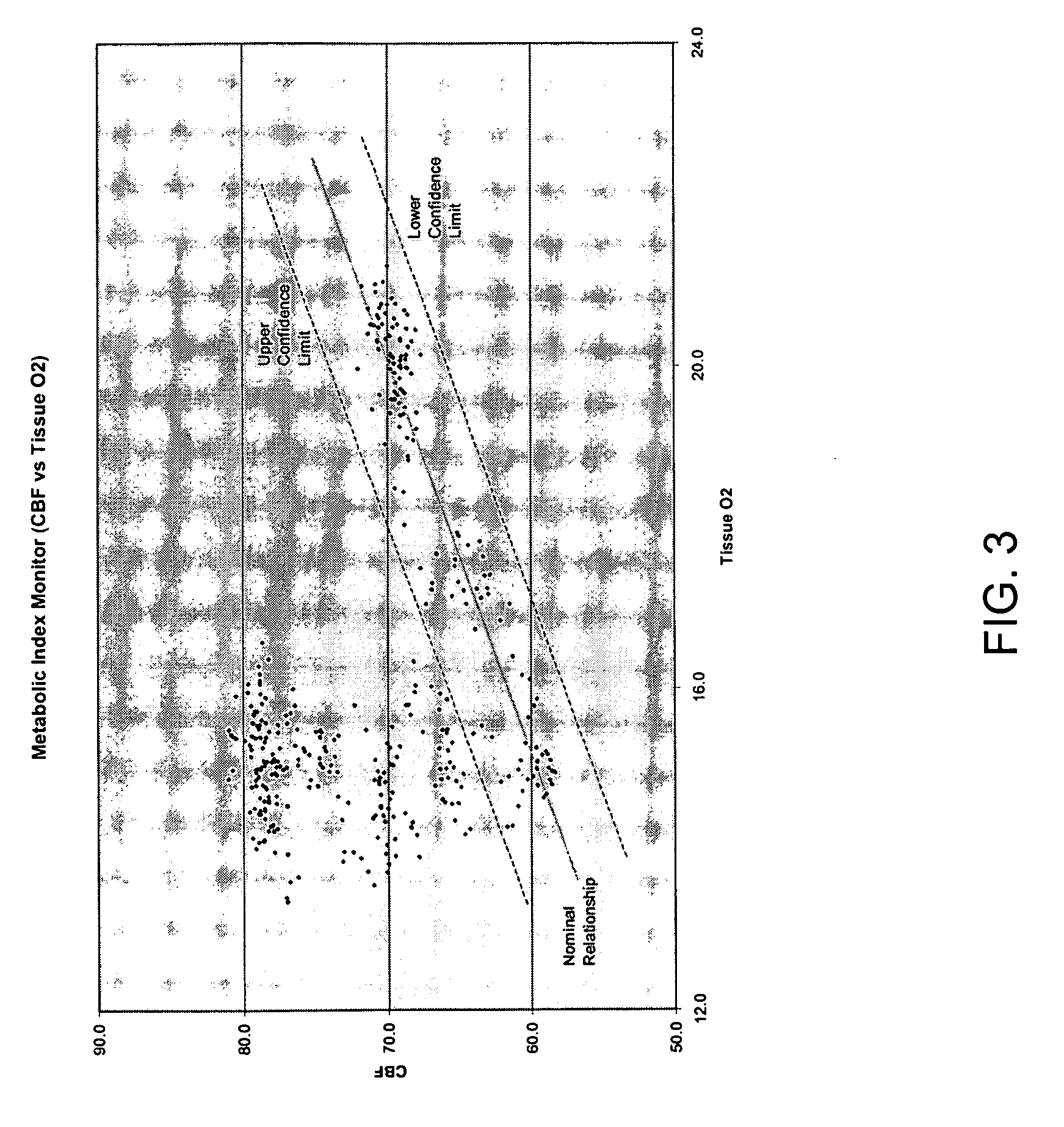Neuromonitoring system
- Summary
- Abstract
- Description
- Claims
- Application Information
AI Technical Summary
Benefits of technology
Problems solved by technology
Method used
Image
Examples
Embodiment Construction
[0039] Referring to FIGS. 1-4, an illustrative multimodal neuromonitoring system according to the invention can interrelate measurements of various physical parameters and output derived quantities which are clinically relevant and thus useful to clinicians. This system can also include electronic displays that present clinically meaningful relationships between various physical and chemical measurements of brain function and a process for calculating when a patient's current neurophysiological state is different from a nominal “healthy” neurophysiological state. There are four major components of a process to detect when a patient's neurophysiological state is different from a nominal “healthy” neurophysiological state: [0040] the measured condition of the patient [0041] the definition of the nominal relationship between two or more physical or chemical measurements available through neurosurgical monitoring devices [0042] the definition of deviation from the nominal relationship [...
PUM
 Login to View More
Login to View More Abstract
Description
Claims
Application Information
 Login to View More
Login to View More - R&D
- Intellectual Property
- Life Sciences
- Materials
- Tech Scout
- Unparalleled Data Quality
- Higher Quality Content
- 60% Fewer Hallucinations
Browse by: Latest US Patents, China's latest patents, Technical Efficacy Thesaurus, Application Domain, Technology Topic, Popular Technical Reports.
© 2025 PatSnap. All rights reserved.Legal|Privacy policy|Modern Slavery Act Transparency Statement|Sitemap|About US| Contact US: help@patsnap.com



